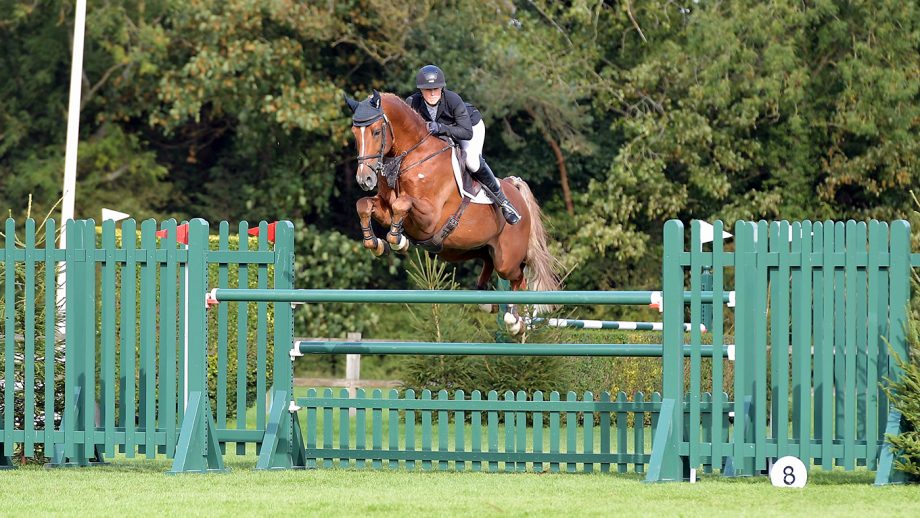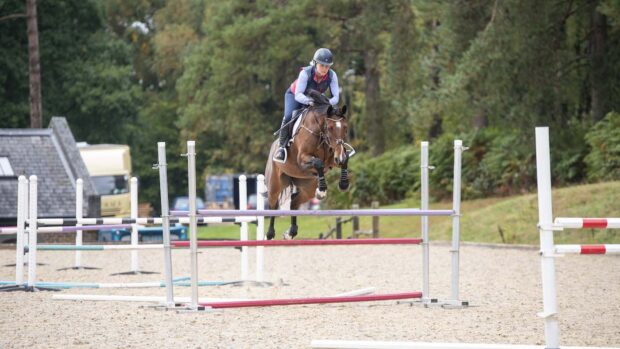The Irish showjumper on his flexible six-jump course exercise, designed to improve the control of the horse
Aim
I use this training for all of my own horses every week and it has proved to be a useful tool for coaching. This flexible six-jump course exercise can be used in numerous ways and at any level, and is an excellent introduction to jumping a course of fences. The exercise also helps with improving the control of a horse, change of lead, bends and also in particular, preparation for jump-offs.
Every fence in this course is designed to be approached from both sides, each vertical has two poles on cups and two ground lines. Each oxer is square (front and back poles equal height) with ground lines either side and has two poles on cups.
The exercise options

The warm-up
This is a very good introduction to jumping at angles or a sound way to improve jumping at angles. Canter down the left- hand side of the arena towards C. Approach fence four at a nice angle, continuing a figure of eight loop to jump eight on an angle as well (see diagram, right). Change rein and repeat the exercise until you can ride smoothly through all angles.
Course A: 1-8
This training exercise is a solid introduction to jumping a course of fences — it encourages good control and correct riding through bends in particular. Canter to number one with a nice four strides to number two, canter through the bend on the left rein and over number three down the distance, bend on the right rein over the number four two-stride double, then over the number five oxer and six vertical.
Ride the tighter bend over vertical number seven, then canter the distance on the left rein nice and straight over the number eight double.
Course B: 1,2,3,6,7,2,8
This exercise can follow on from the warm-up for more experienced horses, or be a helpful introduction to jump-offs. Canter to jump vertical number one, then a nice four strides down to number two.
Concentrate on jumping with good control down the dog-leg line from three to six and straight onto a second dog-leg line seven to two and finishing over the number eight double.
Young horse exercise
For young horses, you can utilise jumps three and seven in both directions (making sure they have a groundline on each side).
Jump the fences on both reins and approaching from both sides, increasing the height incrementally.
Article continues below…
You might also be interested in:

#SundaySchool: the showjumping ‘gym’ with Holly Smith
The international showjumper talks us through this multi-fence workout which she uses with both her younger and more experienced horses

#SundaySchool: how to improve control with Blyth Tait

Subscribe to Horse & Hound magazine today – and enjoy unlimited website access all year round
Tips and pitfalls
- It is really important to keep your horse under control on the approach to the fence and vital to jump in the middle of the fence in these exercises, otherwise it will be harder to alter your distances successfully in preparation for the upcoming fence.
- Do not be tempted to build a massive course for this exercise. Large fences are not necessary — this exercise is all about improving control and learning to ride nicely through bends.
- It is crucial that the set-up of this course of fences is correct — all oxers must be square and there must be groundlines on both sides to allow you to jump the fence from either direction in order to train your horse equally on each rein.
For all the latest equestrian news and reports, don’t miss Horse & Hound magazine, out every Thursday



